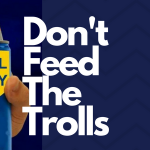I Am Social: How To Build A Tribe
One of the most common requests I receive from marketing and social media professionals is “teach me how to build a tribe.” I am also asked to produce presentations on tribes and social media activism, due to my work in the good food movement. This article covers tribal basics, examples of successful tribes, a brief overview of how to build a tribe, and hopefully inspiration for those interested in tribe building.
Here are the first 2 things you need to know when understanding the importance of tribes:
- Behind every major movement and successful marketing engine, there is a tribe.
- If you’re interested in being successful at selling a product, selling yourself as an entertainer, or selling your services, you’re going to need a tribe.
Let’s cover some basics first, then I’ll explain the various, and equally important roles, each of us can play within a tribe.
Tribe/trīb/ noun: A social division in a traditional society consisting of families or communities linked by social, economic, religious, or blood ties, with a common culture and dialect, typically having a recognized leader. The other names for tribes are customers, fans, crowds, and clients.
Tribes
My love for social media was developed on the first social media platforms. Sites such as Myspace, Ryze, Friendster, Ourstage, and Bebo were a blessing to independent artists as the music industry crumbled and adapted to the internet. After gaining a firm understanding of the potential power of social media, I became interested in how I could use social media to help raise awareness about issues I felt passionate about.
I learned most of my initial tribe building techniques by trial and error. I built my own tribe around my music when I lost label support. By nature, I am a social butterfly, people lover, and am interested in communication and understanding people. These natural tendencies helped me to study tribe building, tribe culture, and leading a tribe.
At the same time I was building a tribe for music, I began to build a social media consulting business, focusing on the good food movement. As my desire to build activist tribes developed, I utilized new platforms like: Facebook, Twitter, Pinterest, Instagram and Reddit. From a citizen activist perspective, I found that I could reach thousands of people instantly, verses reaching a handful by knocking on doors or standing outside of Whole Foods with a clipboard. As I continued to develop my savvy approach and knowledge, I began to realize just how important social media tribes are. If you want to be informed on any issue, there’s likely already an active tribe of like-minded people. If you want to change the world, start a movement. If you want to start a movement, create a tribe.
Leaders And Followers
If you have an idea, but you don’t have followers, you need to read this next part carefully. Nobody starts out with followers. I repeat, nobody.
This is usually where people freak the F&^% out! Why? Because people think they need to compete with those established leaders that have millions of followers. The truth is you DO NOT need a lot of followers, but you DO NEED amazing, committed, loyal followers. Those people who follow your every move. That’s your tribe! There’s a theory by Kevin Kelly called “1,000 True Fans.” The concept states that you only need 1,000 true fans to make a living. According to Kevin, “A True Fan is defined as someone who will purchase anything and everything you produce. They will drive 200 miles to see you sing. They will buy the super deluxe re-issued hi-res box set of your stuff, even though they have the low-res version. They have a Google Alert set for your name. They bookmark the eBay page where your out-of-print editions show up. They come to your openings. They have you sign their copies. They buy the t-shirt, and the mug, and the hat. They can’t wait till you issue your next work. They are true fans.”
Are You A Leader?
It’s a good time to pause and ponder the following questions: “Am I a leader, or am I an inspired person who wants to belong to something?” It’s important to get real with these questions. Not everyone has the commitment or desire to be a leader. Don’t set yourself up to fail, if you know in your gut that you’re not a leader. This doesn’t mean you aren’t important to the issue. It simply means that you are choosing to wear a different hat in this game.
The truth is that we all need to be both leaders and followers, and some of us are satisfied in having important roles such as: tribal members or council members, rather than ever being THE tribe leader.
One of my favorite demonstrations of this phenomenon comes from mentor Derek Sivers. In this short hilarious shaky-cam video, he explains how a movement works from start to finish.
Ok, so now that you’ve watched that awesome video, what are you? The leader or the follower? There is no movement without the first follower. If you want to be a leader, then you need to understand the next important step.
Who is your tribe and what are you leading?
So you’ve got an idea. Let’s speed forward to the next step, which is defining your tribe and what you are leading people to do.
I like to use a marketing tactic called, “one word branding.” This is your one word that defines your movement. This word is the essence of who you are, what your product is, and who you want your tribe to identify with. Your word should define your product, galvanize your followers, and drive your movement. Think of the success of Obama’s one word branding, “Hope.” Here’s another example; if I wanted to lead a group of people to feel happy, and my ultimate goal was as simple as making each person happier, then I might call my tribe: Happiness.
Sit on this for a bit; don’t just choose one and run. Make sure it fits like a glove. If it doesn’t fit, keep hunting, feeling, and digging. Pinterest is an excellent source for creating a mood and finding your one word branding. Type each potential word into Pinterest search, and feel around to see just which word fits your tribe.
Tribe Building Examples
How did I build my tribe? When speaking to fans several years back, they constantly told me how much they loved me, loved my music, loved my fashion, and so on. They would drive to see performances, participate in every contest, email or tweet me constantly. They continue to contact me even when I’m not in their faces producing product. They showed me so much unconditional love throughout the years, that I gave them the nickname, “LOVERS.” You know what nicknames are right? Branding. Well, 99% of the things, people, places, animals etc in my life, have a nickname. I typically don’t even put people’s name in my phone because I rename everyone I meet. If I know you, you have a nickname, even if I don’t call you that to your face. It’s like an unspoken language that only a few people are in on.. but I digress, so I began calling my music fans “LOVERS.” To my surprise, they loved it. So, I ran with it, and dubbed them the Zuri Star LOVERS. The initial tribal members became a tribal council, and I learned so much from them. I literally had them help me with every decision. Essentially, I made my music process their journey. I even tattooed LOVER on my left wrist so that when I grabbed the microphone, I had them with me. I committed to an idea, a product, and my loyal tribe . In my particular case, my tribe almost named themselves based on the tribe’s culture.
. In my particular case, my tribe almost named themselves based on the tribe’s culture.
Tribe building and one word branding isn’t new, and I certainly did not create it, but I studied it and saw many of my peers using it. One thing to note is that tribe building IS NOT limited to music. This marketing technique with “one word branding,” is taught in every marketing 101 class. It’s taught and used religiously because it works! Another example is Lady Gaga, who rose to fame and built a tribe called “Little Monsters.” You can study the evolution of that tribe with a quick Google search. Most marketers use this branding tactic in an attempt to build a tribe, but often times the name doesn’t suit their ideal customer, or their product, or even their end goal. And this is where you may have to revisit your tribe building process and possibly observe the culture already attached to your brand.
Tribe Culture
Tribe culture is by far my favorite part of tribe building. It’s the point at which you have a few followers and you get to watch what they do in your playground. You’ll want to take note of the following:
- What’s your branding culture?
- Do you have a funny dance, a handshake, a hashtag, or a unique hello?
- What do you give your tribe?
- Do you host events, chats, concerts, interviews? Which one is their favorite?
Monitoring this activity is key to being a leader and leading a tribe. It’s a reciprocal relationship. As in life, you really only get to keep what you give away. Tribe culture requires a lot of what I like to call, engagement massaging. You’re going to have to monitor how they engage with one another, You’ll need to ask yourself the following:
- How do you engage with your tribe and where does your tribe engage with you most?
- Who is trolling and not really into being in the tribe? How will you handle that obstacle?
- Who is leading, (or acting as a council member), for you when you’re off duty? How will you reward them? You’ll want to reward those tribal council members for being committed to your big idea!
The Process
A tribe can take a long time to grow, so don’t use your colleagues, peers, or mentor’s tribes as a benchmark. Those people are not you! You have to figure out how to grow your garden the way you want to, and not allow your longing for immediate success to thwart your daily efforts. I belong to many tribes as simply a follower, and I lead, and help lead several tribes as well. I have had some fast successes, and some have taken what seems like FOREVER to build. The slow builders usually had foundational issues, and we had to pivot to find the right language, right one word branding, culture or ideas to lead our tribe. But keep this in mind; the only way you can fail as a tribe builder, is if you quit.
I repeat: The Only Way You Can Fail, Is If You Quit!
Another trap is watching others too much. Study and then apply. Don’t zone out to another person’s creation and lose time and inspiration to share your own. When you get focused on other people’s successes, you will fall off track. PAUSE here for a brief message: NEVER compare yourself to others. When you compare your successes with the successes of others, you lose sight of your OWN importance. As Theodore Roosevelt said, “Comparison is the thief of joy.” Replace comparisons with focusing on your own brilliance, and fall in love with YOUR vision. Love is always going to trump fear. Tribes are about union, and cannot be built while feeding feelings of jealousy, or looking over your shoulder at other tribes that you might admire. Unity requires a leader who sees connectivity as the highest order.
Happy building, happy following, happy supporting, happy leading. You got this!






Wow. Really great read!! I enjoyed this.
My brother recommended I may like this blog. He was once entirely right.
This post actually made my day. You can not believe simply
how a lot time I had spent for this information! Thanks!
At this time I aam going to do my breakfast, later than having
my breakfast coming again to read further news.